HOME
GUARD MEMORIES AND
INFORMATION - OTHER COUNTIES (M-S) - OXFORDSHIRE
3rd OXFORDSHIRE BATTALION, WITNEY Coy.
DE HAVILLAND Platoon
and
Pte. STANLEY R. BRITTON
This a page within the www.staffshomeguard.co.uk
website. To
see full contents, go to SITE
MAP.
|
Alan Britton of Warkworth, New Zealand is assembling the history of the de Havilland Aircraft factory at Witney in Oxfordshire and will publish it online in due course. Meanwhile he writes to staffshomeguard on one aspect of that history - the factory Home Guard and his father's role in it.
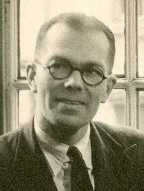 My father, Stanley R. Britton, was employed by the de Havilland Aircraft Company at Hatfield in Hertfordshire. During the Second World War the government decided that no civil aircraft should be permitted to operate east of a line drawn from Southampton to Edinburgh. This meant that no civil aircraft could fly into Hatfield to use the repair and service facilities. Accordingly de Havillands were obliged to find somewhere in the ‘free’ zone to continue providing the services. A senior staff member of the company, C.S. Thom, knew of the Witney aerodrome, it currently being the home of a flying club and was used during the previous war as a base for the RAF, so Philip Gordon Marshal who was later to be in charge made a reconnaissance and declared the site suitable, it was requisitioned by the Air Ministry on 27th September 1939. My father, Stanley R. Britton, was employed by the de Havilland Aircraft Company at Hatfield in Hertfordshire. During the Second World War the government decided that no civil aircraft should be permitted to operate east of a line drawn from Southampton to Edinburgh. This meant that no civil aircraft could fly into Hatfield to use the repair and service facilities. Accordingly de Havillands were obliged to find somewhere in the ‘free’ zone to continue providing the services. A senior staff member of the company, C.S. Thom, knew of the Witney aerodrome, it currently being the home of a flying club and was used during the previous war as a base for the RAF, so Philip Gordon Marshal who was later to be in charge made a reconnaissance and declared the site suitable, it was requisitioned by the Air Ministry on 27th September 1939.
By the following month a small team of Hatfield staff were transferred to Witney among these was my father who was involved in the stores department which was responsible for providing all the tools and replacements parts for the servicing of aircraft as well as my mother who was a fabric worker.
In 1945, many of the staff who had been pressed into service and had been exempted from military service because of their skills - some 1,200 were on the payroll during that period - were returning to their pre war jobs and homes. Because of the close-knit community it was suggested that a social organisation be formed, so the “DH Witney Association” came into being. This continued for many years after the war with regular annual re-unions usually in Oxford or Witney.
As time and age took its toll on the membership the Association was finally wound up in 1986 with the balance of funds being donated to the Witney hospital and all the memorabilia that was thought appropriate to preserve being passed on to British Aerospace at Hatfield. Much of the personal memorabilia that my father kept was passed on to me when both my parents died. The bulk of the original documentation was handed over to Witney Library who in turn I believe lodged it with the library in Oxford. It is all available for public access.
I have taken the following extract from some notes he made in his final newsletter to members at the time of the wind up in 1986. He was Secretary/Treasurer for the whole period of the organisation's existence and maintained close correspondence with its members who dispersed throughout the world and also compiled a regular newsletter which was sent to all members. He included it in a chapter under the heading of "Social Activities" - hence the comment in the second sentence.
I remember the Home Guard de Havilland platoon, Witney Company, 3rd Oxfordshire Battalion - for which I did not volunteer, I must add - which was raised from amongst the employees. It could hardly be described as a social activity, but it did its bit to help raise the comradeship - we had a lot of laughs, often at the expense of each other. The various trips to nearby ranges, the camouflage and map reading exercises. The occasional night patrol with bacon and egg for breakfast in the canteen, to prepare you for another day's work in the factory. I do however remember how proud I felt marching along Burford Road to the sound of marching feet, to parade on Church Green along with other units from the area. |
|
(Historical Note:
Whilst the Home Guard started off as an entirely voluntary organisation, conscription was introduced in January 1942. At that time all men and women between the ages of 18 and 60 were obliged to undertake some form of national service and all available and eligible men between the ages of 18 and 51 were liable to military service of one sort or another including the Home Guard. Service in the latter now precluded the option of resignation. 98% of the serving volunteers elected to accept these more stringent regulations and over the next two-and-a-half years were joined by a stream of conscripts like Pte. Britton who no doubt demonstrated varying degrees of enthusiasm for their new role. See Timeline Nov. 1941 - Feb. 1942).
Amongst the surviving personal documentation is an interesting Proficiency Certificate awarded to Stanley Britton in 1943.
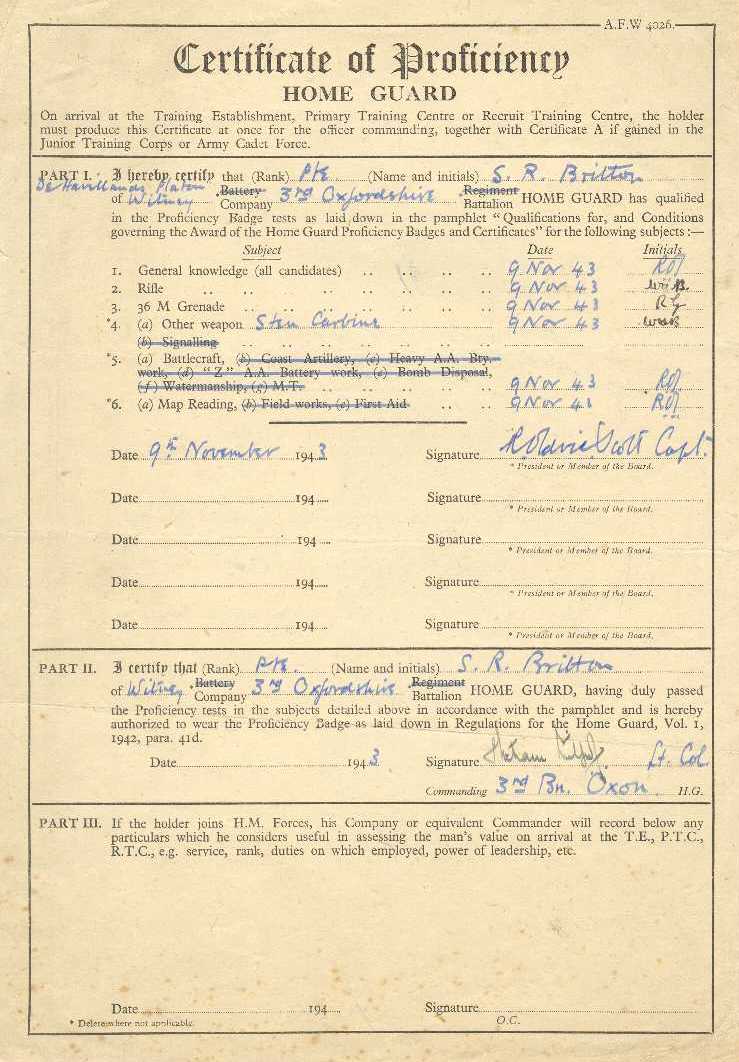
At the end of his service, in common with all Home Guards who had served for a long period, Stan Britton received a gracious acknowledgement for his efforts from the King, H.M. King George VIth.
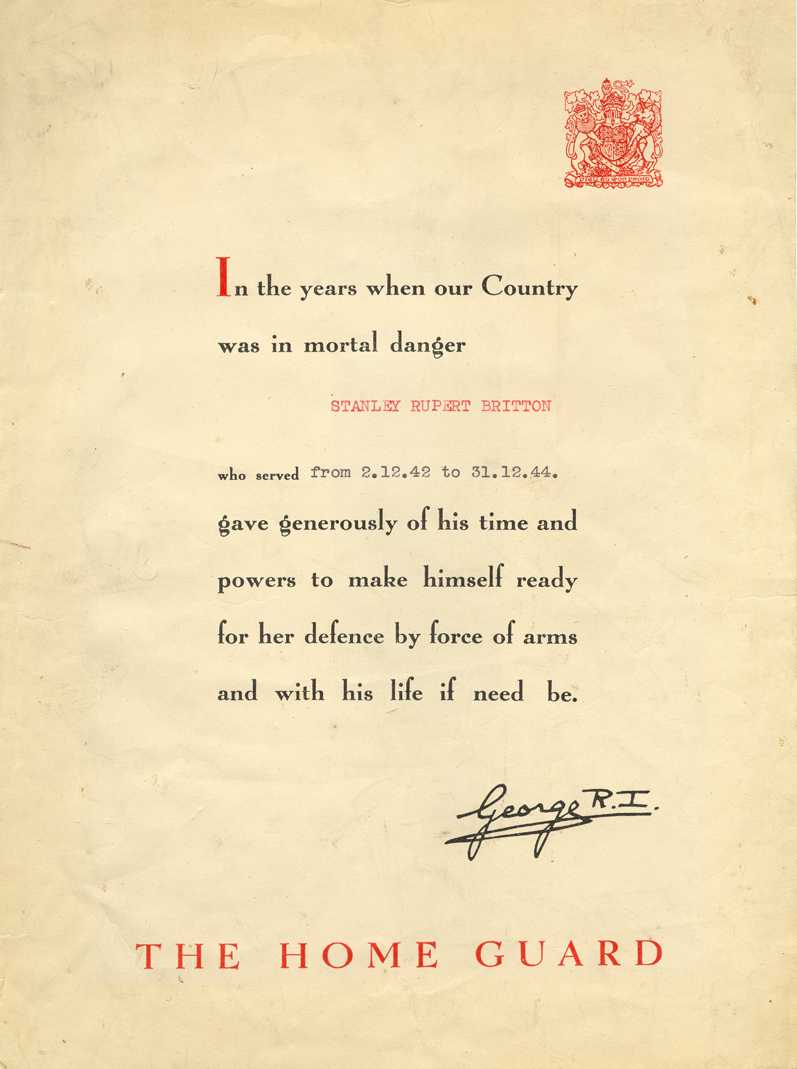
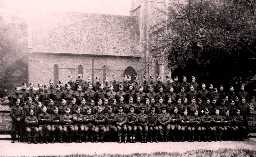
Images of the Witney units survive. They may be seen on this website (click on the images to the left to see full-sized versions of each). They were probably taken before Stan Britton joined the service late in 1942 and he does not appear in either.
|
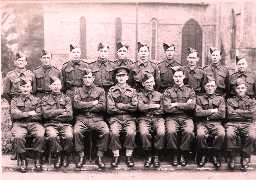
Click on images
to expand
These two images courtesy of Witney and District Museum
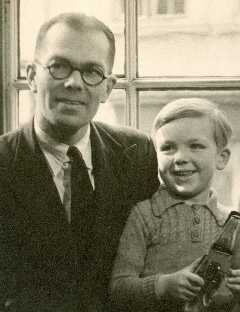
A contemporary
portrait of Stan Britton and his son Alan, taken during his Home Guard service on April 3rd, 1943 in Oxford.
ACKNOWLEDGEMENT
We are most grateful to Alan Britton of Warkworth, N.Z. for
these memories of his father and his permission to reproduce
them here. Both he and staffshomeguard would like to supplement
them with other reminiscences and images concerning the Witney Home Guard men and
also with any information about the de Havilland factory. Please use Feedback if you can contribute anything and your comments will be passed
on to Alan. Britton images © Alan Britton, 2008
The story of another employee at de Havilland Witney and member both of the local Home Guard and the postwar DH Witney Association, Harold Green, may be read
here; and that of a further employee: Eric Munton on a further page.
|